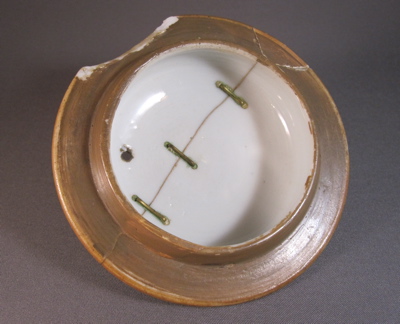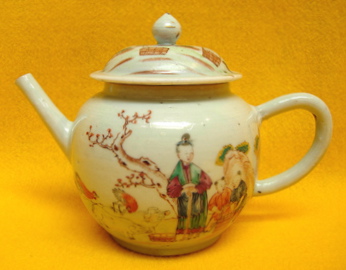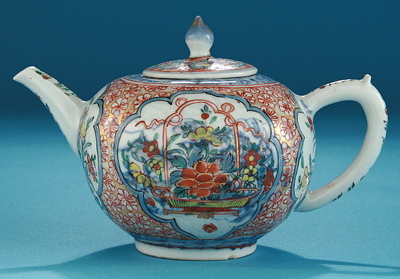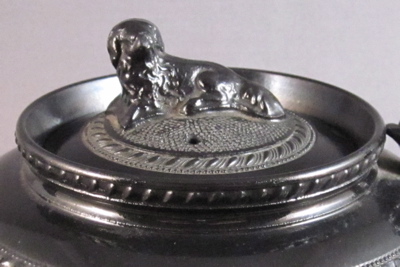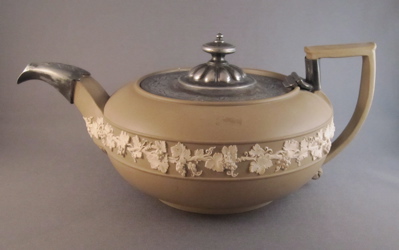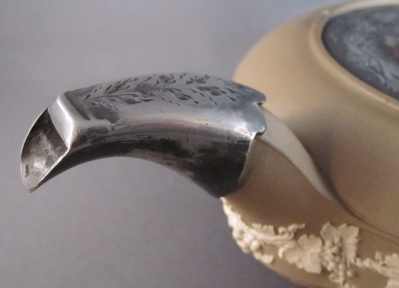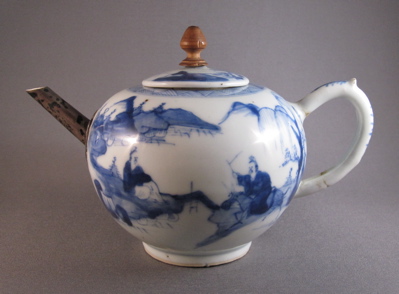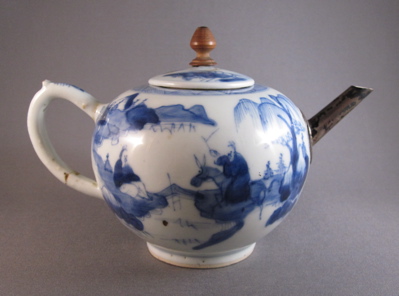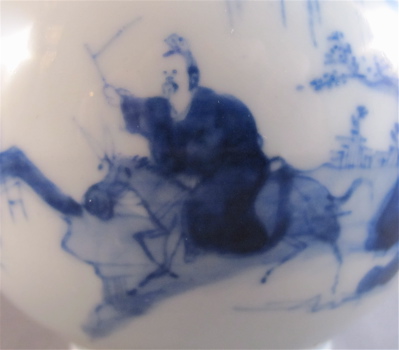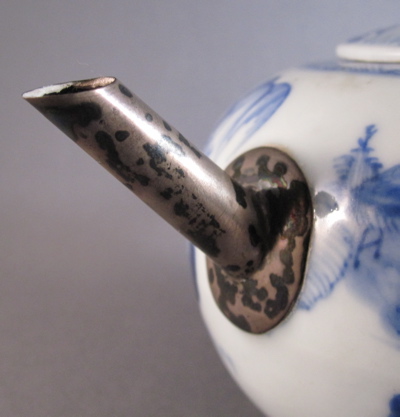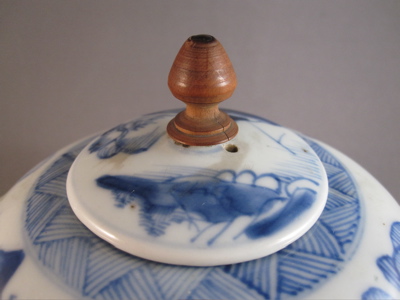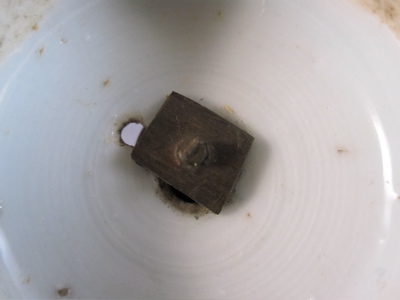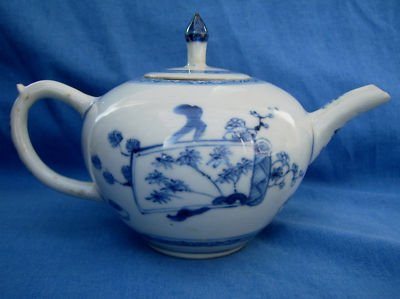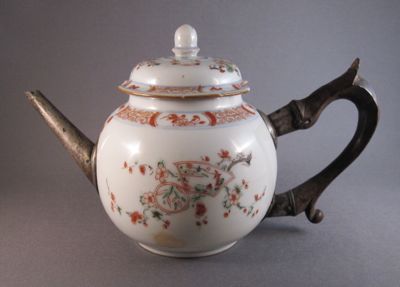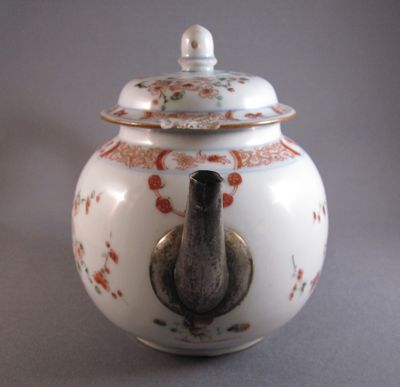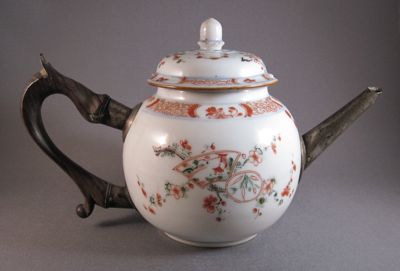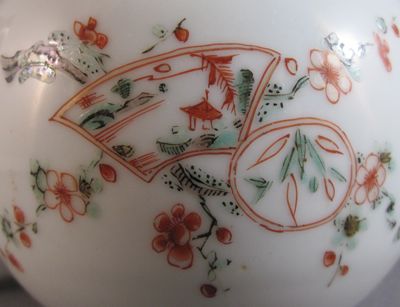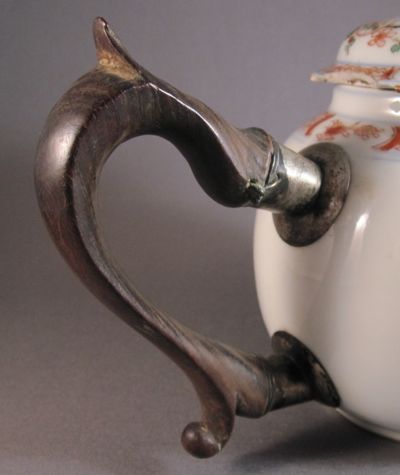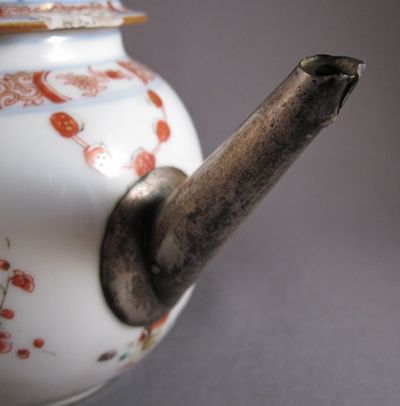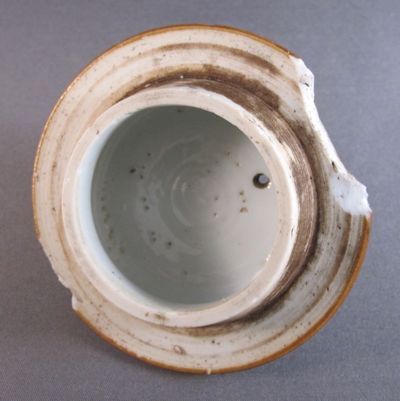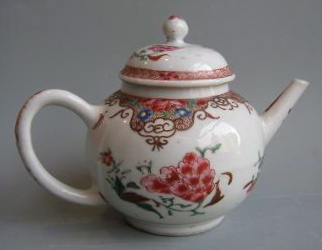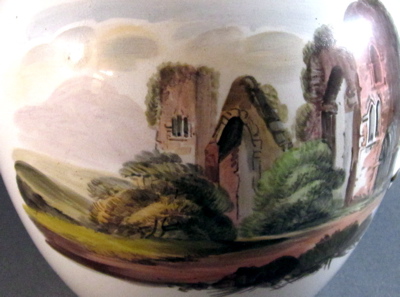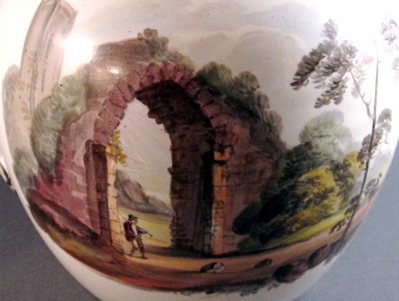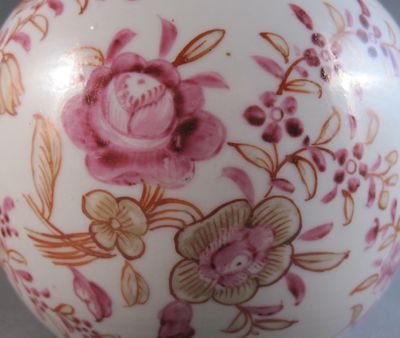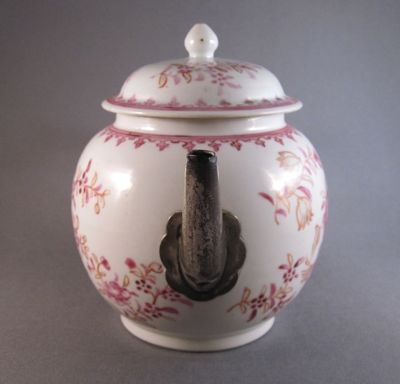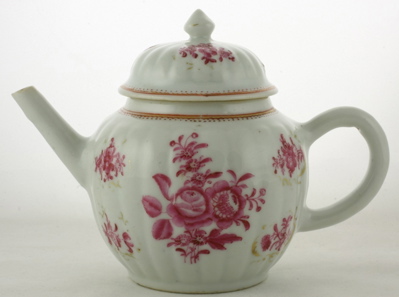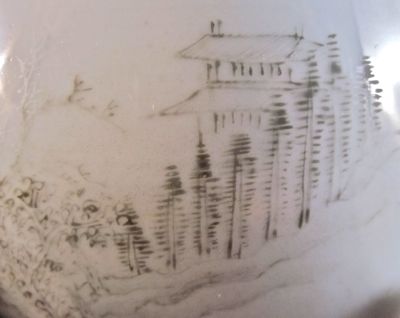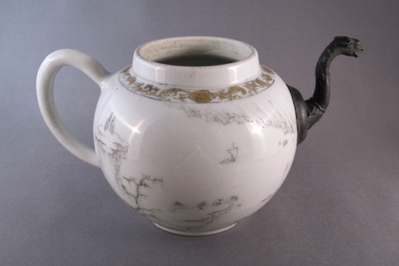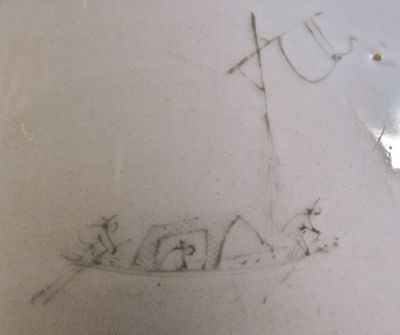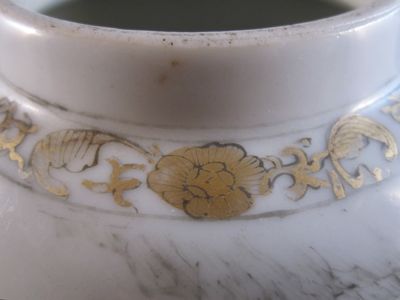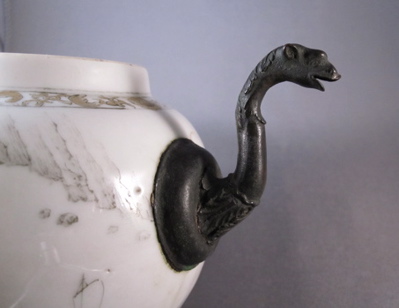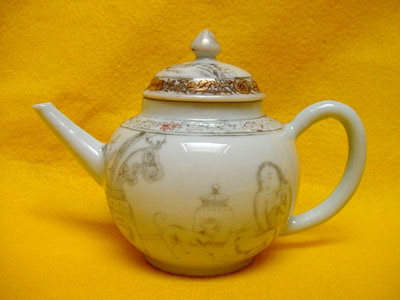This unusual fluted beehive form (aka bell form) porcelain teapot from China was made during the Kangxi reign (1662-1723). It is decorated with a flowering plant design in blue under glaze, has an upright fixed handle and is raised on three small feet.

The stylized floral decoration in vivid cobalt blue is on each of the six panels.

Teapot measures 6-1/2″ high and has eluded me ever since I purchased it 15 years ago at the New York Coliseum Antiques Show, as I could not find any research on it.
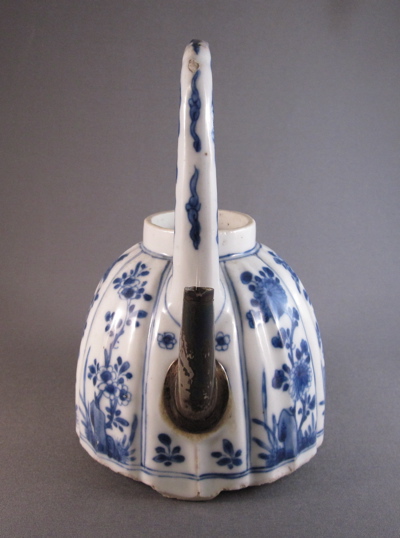
At the time, it was one of the most expensive “make-dos” I had purchased, and it was my first piece adorned with a silver repair.

The replaced silver spout is of modest design, but was made by a silversmith sometime in the 1700s-1800s, and at considerable cost to the owner.

I was thrilled to have recently found this photo showing a complete, nearly identical teapot, shown here with its original lid and spout. This one sold at Christie’s in 2008 for more than four times the estimated price.
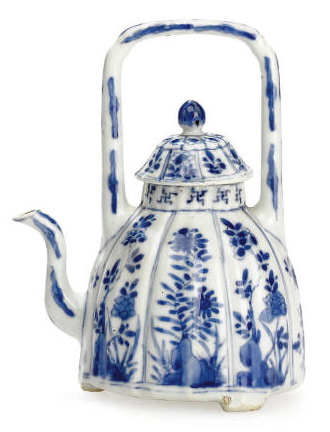
Photo courtesy of Christie’s






